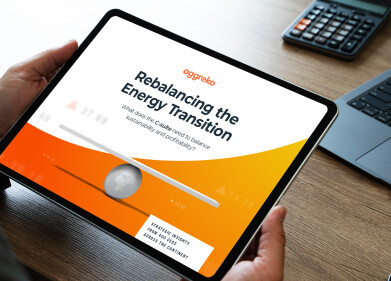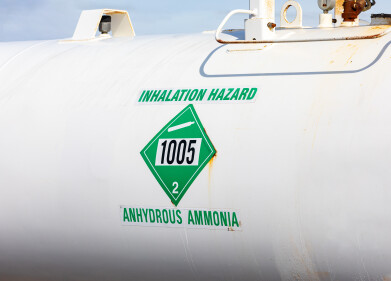Fuel for thought
By 2025, no Norwegian will drive a car with a combustion engine
Jun 24 2023
Norway is a leading example of environmental stewardship, with an ambitious and successful approach to promoting zero-emission vehicles (ZEVs). The comprehensive set of incentives, implemented over time by various government coalitions since the 1990s, has propelled Norway to the forefront of the electric vehicle revolution.
The Norwegian government has embarked on a bold endeavour - by 2025, it aims to ensure that all new cars sold in the country will be zero-emission, which means, primarily, electric or hydrogen-powered. By the close of 2022, an impressive 20% of cars registered in Norway were battery-electric vehicles (BEVs), capturing a market share of 79.2% that same year. This swift transition is attributed to judiciously implemented policy measures and diverse incentives.
How has Norway incentivised uptake of electric vehicles?
Norway's political consensus is clear: the economic scales should always tip in favour of low- or zero-emission cars. This principle, commonly referred to as the “polluter pays" principle, is embedded in the country's car tax system. High emission cars attract greater taxes, while low and zero-emission cars enjoy tax reductions. This system has efficiently generated revenue for the state while incentivizing the purchase of environmentally friendly cars.
The purchase tax on new cars is calculated by considering the vehicle's weight, CO2, and NOx emissions. The tax increases progressively, discouraging the purchase of larger, high-emission vehicles. This tax has been systematically modified over recent years to focus more on emissions and less on weight.
Until recently, EVs were exempt from VAT and Norway's substantial purchase tax on new cars. As of January 1, however, the 25% VAT exemption applies only to the first 500,000 Norwegian kroner of the price. In addition, from 2023, a purchase tax based on an electric car's weight was introduced.
An agreement was reached in the Norwegian Parliament allowing counties and municipalities to charge no more than 70% of the price for fossil fuel cars on toll roads, although there may be regional variations. Similarly, EVs pay a maximum of 50% of total ferry fares.
Between 2017 and 2021, legislation was enacted granting "charging rights" to residents in apartment buildings. This established a basic need for adequate and accessible charging infrastructure. Although most EV owners charge at home and do not require fast charging daily, having the ability to fast charge when needed is considered crucial.
For long-distance trips, a well-structured charging network is necessary. Norway has successfully established fast charging stations on all major roads, enabling more than 5,600 cars to fast-charge simultaneously as of the end of 2022. Interestingly, consumers are willing to pay triple the domestic electricity rate for the convenience of fast charging.
Over the years, Norway has implemented various incentives to boost the adoption of electric vehicles, such as purchase/import tax and VAT exemptions, reduced tolls and ferry fares, and access to bus lanes. However, some of these benefits have been adjusted or phased out to reflect the maturing EV market.
The Norwegian government’s extensive use of financial incentives to encourage the adoption of electric vehicles has been particularly effective. Beginning with exemption from purchase and import taxes since 1990 and exemption from a 25% VAT since 2001, Norway has made it economically appealing to choose electric over conventional combustion engine vehicles. However, these incentives have seen some modifications over time. Starting from 2023, EVs faced a purchase tax based on the car's weight, and the 25% VAT exemption applied only to the first 500,000 Norwegian Kroner of the price.
Apart from financial incentives, Norway's government provides benefits that make owning and operating an EV more convenient. For instance, the Norwegian Parliament has legislated that counties and municipalities can't charge EVs more than 70% of the price for fossil fuel cars on toll roads. EV owners also enjoy reduced rates on ferries, paying only half of the regular fare. Free access to municipal parking and the ability to use bus lanes have added to the allure of EVs. However, from 2023, the toll road discount was reduced to 70%, and some rules, like access to bus lanes, have been modified to only include EVs carrying passengers.
Finally, Norway's development of a comprehensive EV charging infrastructure, supported by appropriate legislation, has significantly boosted the attractiveness of electric cars. Between 2017 and 2021, legislation established the "charging right" for apartment dwellers, helping to make home charging accessible for more residents. The government also focused on the expansion of a fast-charging network, essential for longer distance trips. By the end of 2022, more than 5,600 cars could fast-charge simultaneously. The Norwegian public has shown a willingness to pay a higher price for fast charging services, valuing the convenience and speed it offers.
Norway's commitment to achieving a zero-emission car fleet by 2025 has placed the country at the zenith of global electric vehicle adoption. In 2022, electric vehicles accounted for a whopping 79.3% of all new cars sold in the country.
The nation's strategy involves a combination of incentives, such as subsidies, discounted parking, toll after this point in order to comply with the 2048 exemptions, and access to bus lanes, coupled with high taxes on traditional petrol and diesel cars. This carrot-and-stick approach has yielded impressive results, with Norway well on its way to achieving its 2025 zero-emission target.
While the progress in Norway's EV adoption is remarkable, the journey is not without challenges. Notably, providing an adequate charging infrastructure that meets the needs of an ever-growing number of electric vehicles remains a critical task. Issues such as charging station congestion and ensuring that residents in apartments have access to home charging facilities are still to be fully addressed.
Additionally, ensuring the grid's stability to handle the increase in electric demand is an ongoing challenge. With the growth of EVs, electricity consumption for transportation is expected to increase dramatically. The Norwegian grid, like any other, has limits to the amount of power it can distribute at any given time, making load management a significant concern.
The country is also grappling with social equity issues surrounding electric vehicles. Given that the cost of EVs is still relatively high compared to conventional vehicles, there is a risk that the benefits of EVs (like reduced toll and ferry fares) will primarily go to wealthier citizens. The government is considering various measures to address this issue, such as offering more incentives for lower-priced electric cars.
Despite these challenges, the future looks bright for Norway's zero-emission vehicle program. The country's ambitious target and systematic approach to promoting ZEVs serve as an inspiring example to the rest of the world. And, given its robust commitment to reducing carbon emissions and combating climate change, Norway is expected to continue leading the charge towards a more sustainable future.
Digital Edition
PIN 25.5 Oct/Nov 2024
November 2024
Analytical Instrumentation - Picturing Viscosity – How Can a Viscometer or a Rheometer Benefit You? - Sustainable Grease Formulations: Evaluating Key Performance Parameters and Testing Method...
View all digital editions
Events
Jan 20 2025 San Diego, CA, USA
Jan 22 2025 Tokyo, Japan
Jan 25 2025 San Diego, CA, USA
SPE Hydraulic Fracturing Technology Conference and Exhibition
Feb 04 2025 The Woodlands, TX, USA
Feb 05 2025 Guangzhou, China



















